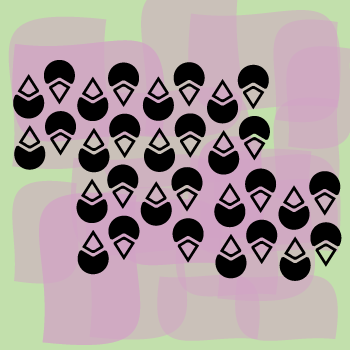This article is an introduction to blockchain marketing, which I share with marketers who want to start in this field. My name is Daria Volkova. I’m the Head of Brand Marketing and Product Marketing Manager and have worked with blockchain products.
There is less information in blockchain marketing than in other industries. This is both bad and good. It’s bad because the knowledge base is limited, and few people are ready to share their experiences with you. Good, because you can be the first in the niche if you find some growth hacking tools.
Also, it is worth knowing that standard lead generation does not work, and they are relevant for centralized projects like crypto exchanges but not for Web3. I will talk about CEX marketing in another article.
So, to begin with, let’s analyze in more detail what Web3 is, why blockchain is here, and how this version of the web changes the format of interaction on the Internet.
What are the features of different stages of the web?
WEB 1.0 — CONSUMPTION
Traditional media readers found content online and performed limited operations.
WEB 2.0 — CONSUMPTION AND CREATION
The emergence of complex databases, social platforms, mobile innovations and cloud technologies. UGC, behavioral retargeting, Google, Amazon, Facebook, Instagram and TikTok.
WEB 3.0 — CONSUMPTION, CREATION AND MANAGEMENT
An era of greater individual ownership and decentralized systems. Ownership is tokenized, and we can bet on new technology that is more open to the community.
Here is a picture with a great example of an explanation of the difference between Web stages. In Web3, you can use your Metamask or TrustWallet to log in to projects.
Web3.0 Projects Types
Many projects are being created for Web3, but all of them are built on blockchains.
Blockchains — there are high-performance blockchains that support smart contracts and decentralized applications. Most use a Proof of Stake consensus mechanism with a low barrier to entry. The most popular are Ethereum, Solana, Polygon, Cosmos, Binance Smart Chain, and NEAR.
Also, there are Layer2 Solutions, which are based on zero-knowledge proofs and help to scale Ethereum. The most popular L2 projects are Optimism, Arbitrum, and zkSync.
Blockchains and L2 form ecosystems with a huge number of different products. For example:
DeFi Projects — is the movement that leverages decentralized networks to transform old financial products into trustless and transparent protocols that run without intermediaries. PancakeSwap, UniSwap, Sushiswap, Aave, and Curve Finance are the most popular.
NFT Collections and Platforms — digital marketplaces for crypto collectibles and non-fungible tokens (NFTs). The most popular are Rarible, OpenSea, and Binance NFT Marketplace.
Metaverse Spaces. The idea behind the metaverse is to create a space similar to the internet but more tangible so that users can interact with the world via digital avatars. The most popular are Sandbox, Decentralend, Spatial, and Upland.
Social Media and Content Creation Platforms — traditional social media are dull, insecure, and oversaturated with ads. The Web3-developed social platforms like Bluesky, Steemit, and Audius are more relevant for the new way to interact.
Below is an example of an ecosystem built based on the Solana blockchain. Building such a system depends on the demand for technology and the ability to present its importance to the community.
Another example of the Web3 project is the Bored Ape Yacht Club — a trendy NFT collection. Characters of monkeys are used in games and music videos. The cost of pictures starts from 60 ETH. A metauniverse with characters from the series is being prepared for launch.
So, we figured out what Web3 is and what projects there are. Now let’s move on to the part where I will explain the features of marketing such projects and how they differ from e-commerce or FMCG marketing.
VALUES & POSITIONING AS A BASIS
Genuinely successful projects are always based on ideology, values and an understanding of their otherness. To be an outstanding project, you must create and develop a unique brand based on a system of values. It should be revealed in the logo, font style, visual design, external communication strategy, and all words and actions of the company.
The values should be such that you can build a solid foundation on their basis and attract future team members. Also, values will help you in the stage of creating your brand story, so don’t skip this important part.
For you to work successfully with this database, you need knowledge of brand strategy and the ability to move from details to the big picture, to think globally and to be able to transform meanings into visuals.
TELL YOUR STORY
Storytelling will help immerse your audience in your ideology and make your brand memorable. It will be good if your story is related to the mission and reflects your values.
Talk about the future, not the past.
When promoting blockchain products, it is essential to talk about the future, not the past, because you are creating something new, and this new thing may not be evident at first. Although no one knows about the project initially, a well-crafted narrative is indispensable. When the project grows, storytelling is also necessary because it adds value and meaning.
An excellent example of storytelling is the marketing of the Chainlink project.
Chainlink is a decentralized oracle project whose role is to provide real-world data to the blockchain in the most secure way. This gradually led the market to think that Chainlink was the oracle, equating the entire category with a brand that created a narrative and raised the bar for competitors.
BUILD YOUR COMMUNITY
Success depends on getting people to believe in and use your products. Buying traffic or launching targeted advertising on social networks will not be possible. Community relations and mutual trust are of great importance.
The customer isn’t always right, but a community’s consensus likely is.
Best platforms to build blockchain/web3 community:
Discord is a platform where you must have your profile if you promote a blockchain project. Discord servers are organized into topic-based channels where you can collaborate and share without clogging up a group chat. If you’re not in Discord, you’re not in the blockchain/web3 market.
Reddit — a platform that combines the features of a social network and a forum where registered users can post links to any information they like on the Internet and discuss it. The community of Reddit is robust and has its own rules and values.
Twitter. On Twitter, you can meet Vitalik Buterin, Marc Andreessen and Ben Horowitz, Sam Altman and many other outstanding people from the blockchain and IT products field. Also, Twitter supports the NFT format as an avatar, so people can put pictures on their avatars, emphasizing their affiliation with the brand and becoming ambassadors.
Telegram — is the messenger most popular in Eastern Europe, but now it is becoming more widespread worldwide. It is convenient to create channels and chats, group by interests, and create customized and animated stickers. Telegram is trying to move towards web3 — this can be seen from the product features they add.
Cryptowatch Social — a new platform from crypto exchange Kracken, which positions itself as a universal utility for Web3 and crypto. The idea is to be where critical discussions happen and new cultures grow on a foundation of trust among the community. Apps for iOS and Android are already launched.
Steemit — this platform is very similar to Reddit. There is an opportunity to create your topics and write articles. Most of the topics are devoted to cryptocurrencies and blockchain products. This project is built on the blockchain. Upon registration, a Tron account and wallet are created for you.
COMMUNITY PEOPLE LOVE AIRDROPS
Airdrop in blockchain marketing — is a strategy that involves sending coins or tokens to wallet addresses. Small amounts of the new virtual currency are sent to the wallets of active blockchain community members for free or in return for a small service, such as retweeting a post sent by the company issuing the currency. The ultimate goal of a crypto airdrop is to promote awareness and circulation of a new token or coin.
In November 2021, the Ethereum Name Service (ENS) protocol distributed 25 million ENS DAO tokens via an airdrop. Similarly, a popular decentralized exchange, Uniswap, conducted a retroactive airdrop for its users in late 2020. The list goes on with Trust Wallet Token (TWT), Basic Attention Token (BAT), and more.
When launching blockchain projects, thanking the community for launching the testnet or other actions on the network is considered a good tone and a necessary step for further success. In October 2022, the Aptos team did not ignore this step and thanked the supporters who launched the testnet or replaced the NFT. The user could receive 300 or 150 APT tokens for each of these actions, respectively. At the time of launch, the token cost $8.55.
After such an event in a bear market, in the fall 2022, airdrop hunters began to subscribe more actively to other projects that are about to launch.
…AND MEMES
The blockchain community loves to create and laugh at memes. As a marketer, you should create yourself and encourage your followers to create thematic memes for your project. They can be specific and not understood by everyone outside the community, but inside it should be the social glue.
In Discord, a separate branch with memes is often made, where participants share their creativity. Here I show memes dedicated to DogeCoin, Ethereum, zkSync:
CREATE A SYNERGY OF PARTNERSHIPS
Blockchain business is built in such a way that it is vital to build partnerships with other projects. This is due to the need to use technology — the more projects that use your technology, the more chances you have for success.
Below I will give an example of how you can successfully combine offline mass market and niche technologies to increase customer loyalty and develop the employer brand.
Starbucks is the most popular brand of coffee shop in the world. Polygon is one of the most promising blockchain projects that creates a complete ecosystem of products around it. Their partnership pleasantly surprises and draws attention to their brands of people from different fields.
Starbucks and Polygon have created a new Web3 experience for Starbucks Rewards members and Starbucks employees in the US. In “Starbucks® Odyssey”, they can earn and buy unique NFTs through Polygon PoS.
First of all, this is the story of the collaboration of a brand from an offline mass market and a technology company. This makes the blockchain closer to mass adoption, I wrote about it, and for the image of the Starbucks brand, such an info drive is cool in itself.
Secondly, NFT in this particular case is an exclusive commodity and gives access to a coffee experience not available to others.
The technical capabilities of the blockchain network, its ecosystem, and its course for sustainable development have already brought Polygon partnerships with Adobe, Stripe and Dolce Gabbana.
Polygon’s collaboration with Starbucks and other classic businesses is an excellent example of how cross-industry B2B partnerships increase companies’ brand awareness and accelerate mass adoption of Web3.
DEVELOP PERSONAL BRANDS OF KEY-PERSONS
It would help if you had a “talking head”, preferably several, who can convey the technological and ideological value of the company. As a rule, these are the CEO, CTO, COO, and heads of business areas.
You can increase recognition and trust with the help of social networks, live broadcasts and interviews, speeches at events.
A good example of a blockchain geek personal brand is Vitalik Buterin, who has 4.5 million followers on Twitter and is the main public figure on Ethereum.
VISIT EVENTS
Events for the blockchain industry are another way to develop a community and present your project to the general public. The most popular event formats: conference, meetup, hackathon. You can set up a branded stand, perform on stage or present your idea in a startup battle.
I added images of several thematic events to the article, but of course there are many more.
You can find a list of major blockchain events around the world by following the link: https://bravenewcoin.com/events
THINK TWISE ABOUT A SPONSORSHIP
Sponsorship is more often than not spending a large amount of money to increase brand awareness, it is an image and reputational cost when a company wants to be associated with a particular community or event.
Sponsorship has several expected functions:
– Leverages of brand influence
– Access to the fan base
– Ability to create a “word of mouth” effect
Sponsorship is now very popular among betting and gambling projects, where it is necessary to reach as large an audience as possible and associate the project with famous athletes or other celebrities.
However, sometimes B2C companies resort to sponsorship, targeting the masses. Below I have given two examples of sponsorships of crypto exchanges OKX and Crypto.com that have become title partners of sports events — Formula 1, FIFA and the NBA.
There is great doubt that such sponsorship will greatly increase the number of registrations and the company’s income. Sponsorships usually cost tens and hundreds of millions of dollars, so it is an expensive pleasure with an unpredictable effect.
To digitize the effect of sponsorship, there must be activation and interaction with users. This can be a reward in the form of tokens or NFTs for fans dedicated to a certain event. In any case, you need to think twice or thrice before spending a large budget on sponsorship.
CONCLUSION
It’s not necessary to fully know the technology stack 100%, but you should understand the philosophy of Web3. Marketers should explore opportunities and test hypotheses as early as possible, as this field evolves every second. Don’t wait. Do!
L O A D I N G
. . . comments & more!
Read More: news.google.com









 Bitcoin
Bitcoin  Ethereum
Ethereum  XRP
XRP  Tether
Tether  Solana
Solana  Dogecoin
Dogecoin  USDC
USDC  Cardano
Cardano  Lido Staked Ether
Lido Staked Ether  TRON
TRON  Chainlink
Chainlink  Avalanche
Avalanche  Sui
Sui  Wrapped Bitcoin
Wrapped Bitcoin  Wrapped stETH
Wrapped stETH  Toncoin
Toncoin  Stellar
Stellar  Hedera
Hedera  Shiba Inu
Shiba Inu  Polkadot
Polkadot  WETH
WETH  LEO Token
LEO Token  Litecoin
Litecoin  Bitcoin Cash
Bitcoin Cash  Bitget Token
Bitget Token  Hyperliquid
Hyperliquid  Uniswap
Uniswap  Official Trump
Official Trump  USDS
USDS  Wrapped eETH
Wrapped eETH  Pepe
Pepe  NEAR Protocol
NEAR Protocol  Ethena USDe
Ethena USDe  Aave
Aave  Aptos
Aptos  Internet Computer
Internet Computer  Monero
Monero  WhiteBIT Coin
WhiteBIT Coin  Ondo
Ondo  Ethereum Classic
Ethereum Classic  Cronos
Cronos  POL (ex-MATIC)
POL (ex-MATIC)  Mantle
Mantle  Render
Render  Dai
Dai  MANTRA
MANTRA  Algorand
Algorand